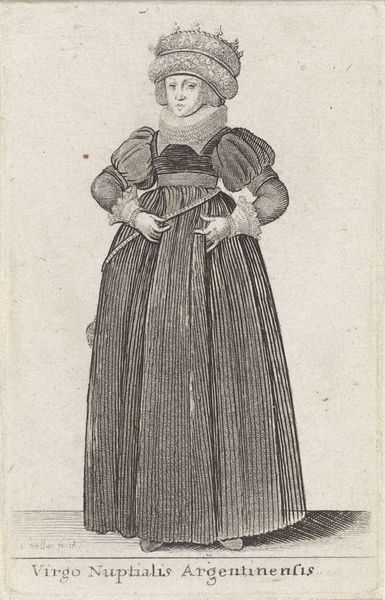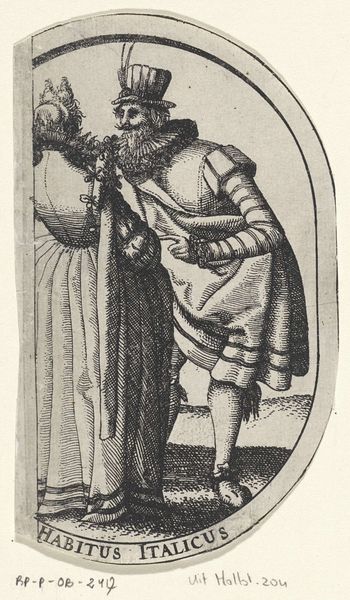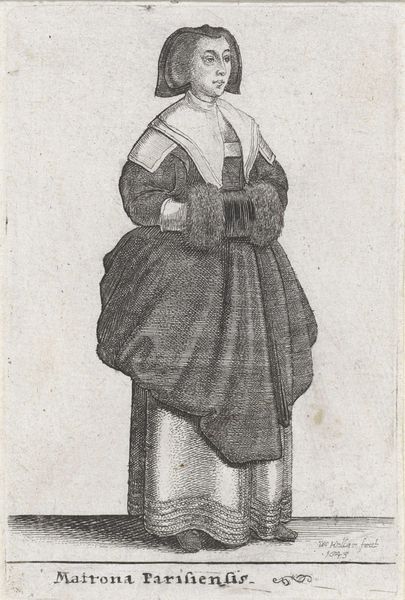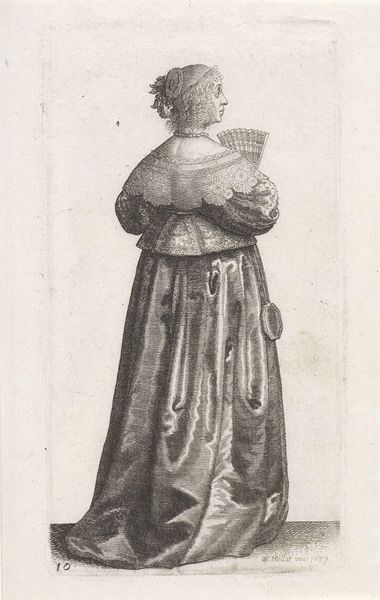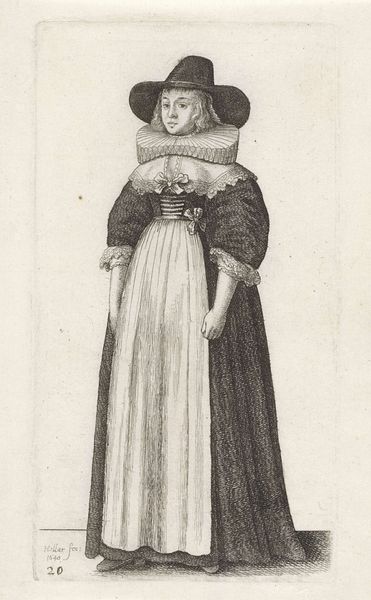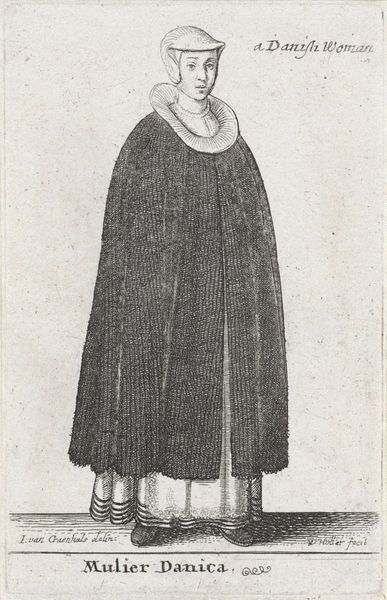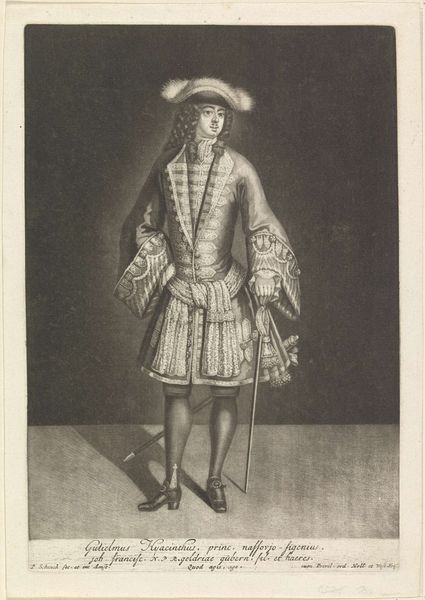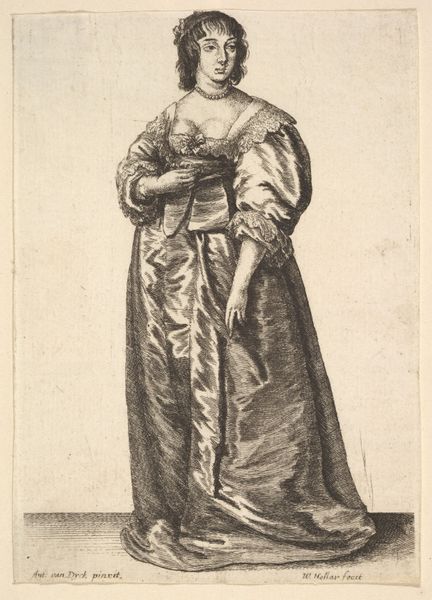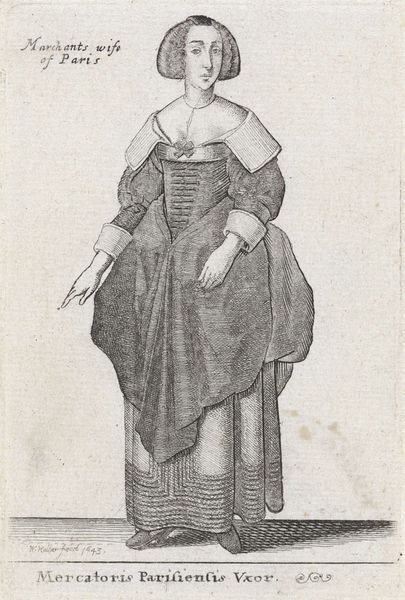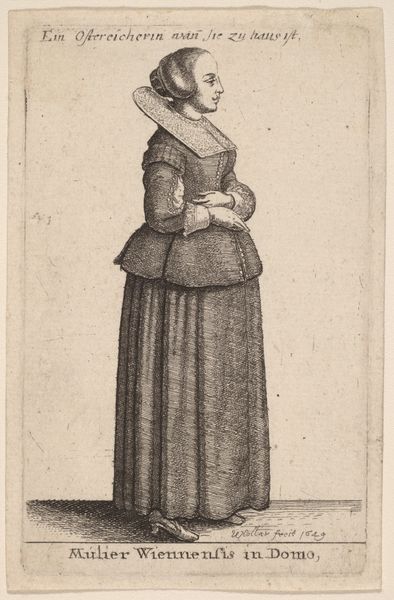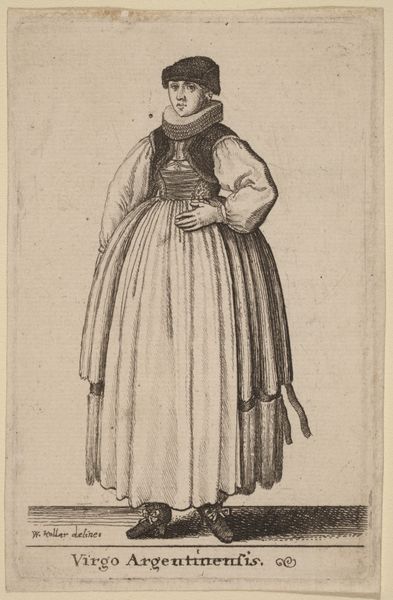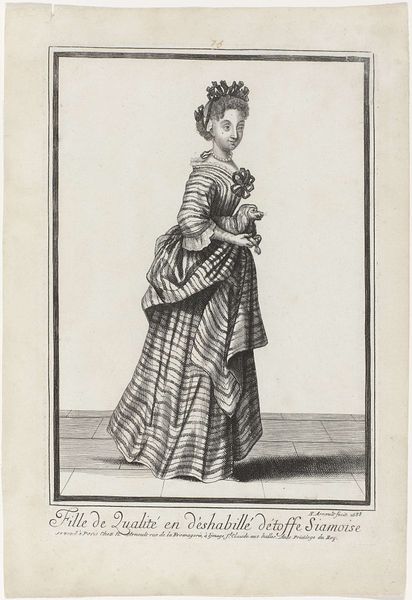
print, engraving
#
portrait
# print
#
old engraving style
#
pencil drawing
#
history-painting
#
northern-renaissance
#
engraving
Dimensions: height 200 mm, width 111 mm
Copyright: Rijks Museum: Open Domain
Curator: Here we have a 19th-century engraving entitled "Portret van Juliana, gravin van Nassau"—Portrait of Juliana, Countess of Nassau. Editor: It’s immediately striking; there's a stillness and formality about it. It feels like looking into a distant, and perhaps slightly austere, past. All those meticulous details captured in print are wonderful. Curator: As a print, it is working with an established visual language for representing status and power. Think of the paper itself, potentially mass-produced through industrial means to replicate the look and feel of the earlier Northern Renaissance portraits it mimics. What stories could it tell? Editor: Yes, I am interested in what’s literally there –the lines etched into a metal plate to then mass produce the print. There is something special when thinking about the process and all that the material carries. But beyond just its industrial nature, the way the image is consumed changes across centuries. Curator: It is fascinating how that process informs meaning! Consider Juliana's dress and ruff collar – these would have been painstakingly rendered, creating the desired aura of elegance and refinement. Even the selection of line weights can affect how the jewelry is received! And I am interested, do you perceive, as I do, a gentle weariness in her eyes? Editor: The textures, particularly the ruff, are intriguing. And the choice of monochrome reinforces the gravity of the piece and its intent. What's interesting is the reproduction as well; someone took their time recreating the feel and texture of the portrait in the industrial medium. Curator: It’s quite moving, to realize we're contemplating not just a historical figure, but an artist's interpretation—twice removed, both in terms of medium and era! Editor: I appreciate that a portrait which was once painstakingly hand-crafted is brought to modern masses with the industrial process, although this makes us question its value today. Curator: In essence, this piece invites us to consider the many layers of interpretation that accrue around an image across time. It whispers, and asks you to really lean in and consider its story! Editor: Absolutely, thinking about art with material helps unpack the context surrounding the pieces which invites contemplation.
Comments
No comments
Be the first to comment and join the conversation on the ultimate creative platform.

